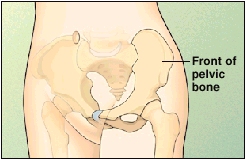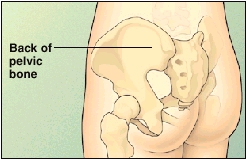Spinal Fusion: Understanding Bone Graft
Spinal Fusion: Understanding Bone Graft
To fuse the spine, very small pieces of extra bone are needed, which are called bone grafts. These bones act as the “cement” that fuses the vertebrae together. There are many different types of bone grafts. The fusion eliminates motion between the two fused vertebrae with a slight loss in flexibility. This surgery can help treat many different back conditions. Two of the more common types are grafts from a bone bank or from your own body. Your surgeon will choose the type of graft that’s best for you.
From a bone bank (allografts)
-
Bone banks collect, evaluate, and store bone. The bone comes from human donors who have had bone removed during surgery or after death.
-
Often the minerals and cells are washout from the donor bone leaving demineralized bone matrix (DBM), which is used for the graft. This process may stimulate bone healing.
-
Some allografts are mixed with bone forming cells such as stem cells. These bone forming cells come from younger donors, typically less than 40 years old.
-
Donors are checked for their cause of death and medical history. Tests are done to check for viruses such as HIV and hepatitis. The bone is also treated before it is used as a graft. The risk of getting a disease from bone graft is extremely low.
From your own body (autografts)
-
If bone from your own body is used, a small amount of bone is taken from a part of your pelvic bone, called the iliac crest.
-
The bone is removed during the fusion surgery—a separate surgery is not needed. Bone may be taken through the incision made for your fusion, or through a separate incision. The area the bone is taken from can hurt quite a bit until it heals sometimes weeks or months later.
-
Apart from grafts from a bone bank or your own body, there are also artificial bone graft materials that can be used. Your surgeon will decide whether it is a better choice for your fusion.
-
Bone marrow cells taken from your own body may also be used together with one of the above choices. The bone specific stem cells found in bone marrow help bone grow and heal.
-
Bone morphogenic protein (BMP) is a protein in your body that helps bone grow and heal. It may also be used together with one of the choices above.


Updated:
January 20, 2020
Reviewed By:
Jasmin, Luc, MD,Sather, Rita, RN